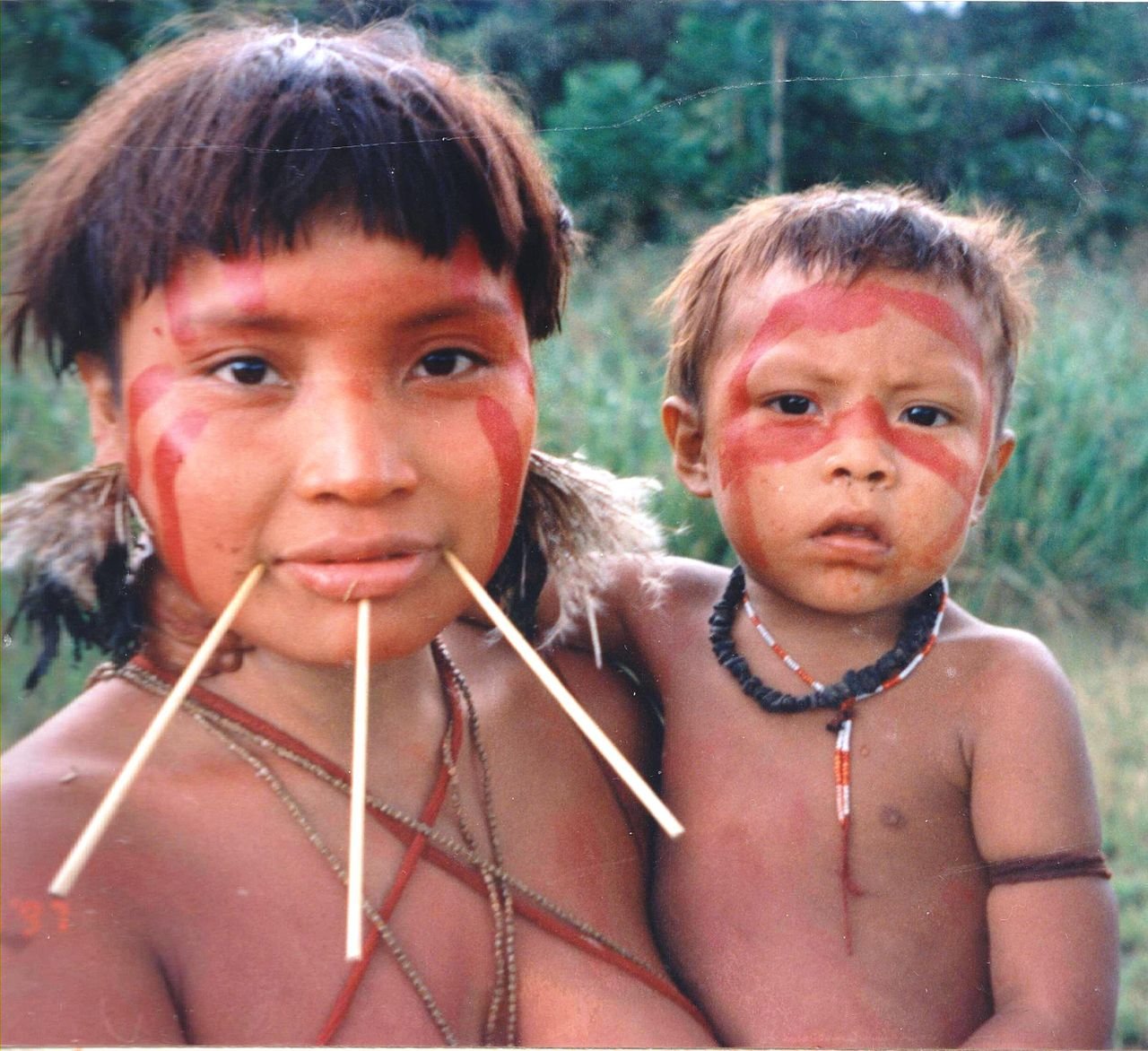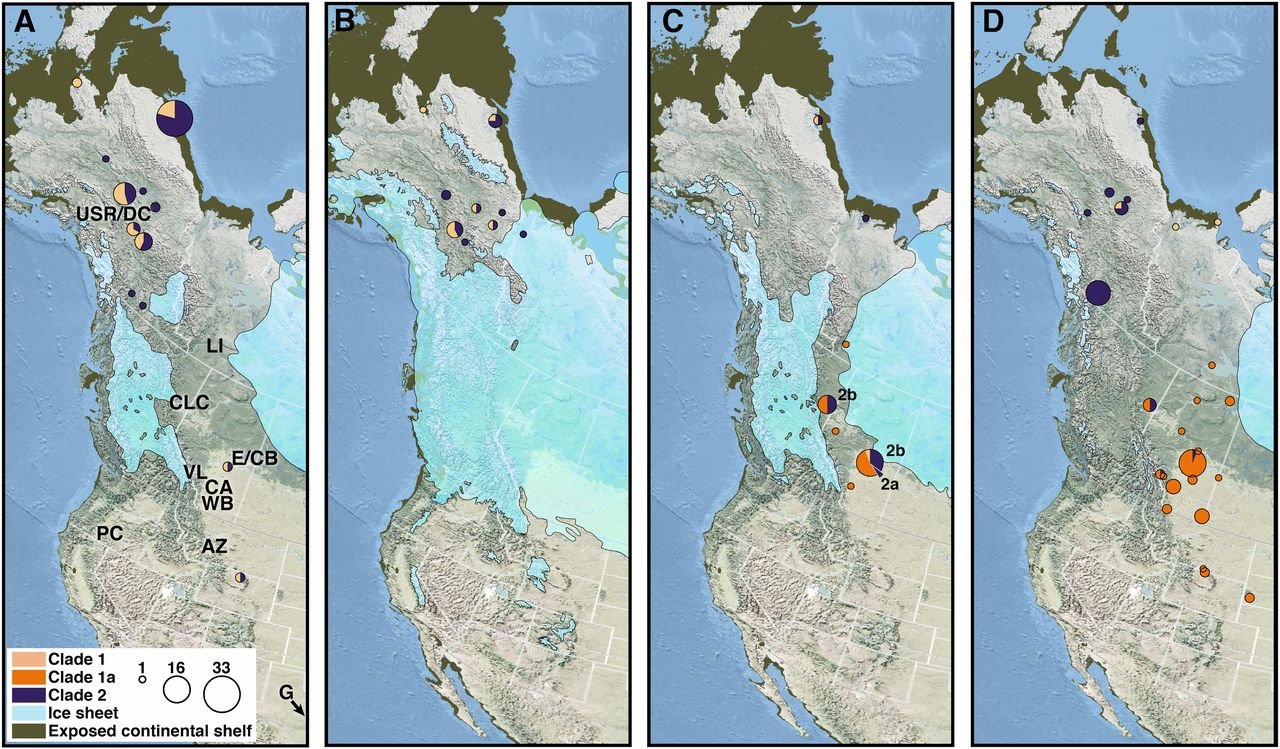The Top Seven Times People Discovered the New World
How many times were the Americas discovered? A lot, apparently.
In 1492, Columbus set sail from Spain to land in the New World, or at least, a world new to Europeans. But it was inhabited, the Americas were already discovered. In fact, they were discovered at least seven times.
Here, we provide the definitive ranking of those discoveries.
7. Christopher Columbus, 1492.
In 1492, Asia could only be reached from Europe by the Silk Road, or a longer sea route, the Cape Route, east around Africa. Sailing west was thought impossible. The distance around the Earth had been estimated by the ancient Greeks at 40,000 kilometers, putting Asia far to the West.
Christopher Columbus
Columbus botched the math, however. An error in unit conversions gave him a figure of just 30,000 kilometers for Earth’s circumference. This mistake, with other assumptions born of wishful thinking, gave a distance of just 4500 kilometers from Europe to Japan. The actual distance is almost 20,000 kilometers.
So Columbus’ ships set sail without enough food to reach Asia. Fortunately, he hit the Americas. Columbus thought he’d found the Indies, and died without recognizing his mistake. It was mapmaker Amerigo Vespucci who realised Columbus had found an unknown land, later named America after him. Influential as Columbus’ discovery was, it was also the last, so he comes in at number 7.
6. Polynesians, 1200 AD.
Around 2500 BC, a seafaring people sailed from Taiwan to find new lands. They sailed south through the Philippines, east through Melanesia, then out into the vast South Pacific. These people- the Polynesians- were master navigators, reading wind, waves and stars to cross thousands of kilometers of open ocean.
Three Tahitians, Paul Gauguin
Sailing huge double-canoes, the Polynesians settled Samoa, Fiji, Tonga, the Cook Islands. Some went south to New Zealand, and become the Maori. Others continued east to Tahiti, Hawaii, Easter Island, and the Marquesas. From here the Polynesians at last hit South America. Then, having explored most of the Pacific, they gave up exploration, and forgot about South America.
Polynesian double-canoe
But evidence of this remarkable voyage remained. South Americans acquired chickens from Polynesians. Polynesians likely picked up South American sweet potatoes. And they shared more than food. Eastern Polynesians have American Indian DNA. Polynesians didn’t just meet Native Americans, they married them.
5. Norse, ~1021 AD.
According to Viking sagas, around 980 AD, Eric the Red, fierce Viking and cunning salesman, named a vast, icy wasteland ‘Greenland’ to entice people to move there. In 985, a boat from Greenland spotted the coast of Canada.
Norse longship
Around 1021, Erik’s son Leif established a settlement in Newfoundland. But harsh climates and war with Native Americans ultimately forced the Norse back to Greenland. These stories were long dismissed as myths, until archaeologists dug up the remains of Viking settlements in Newfoundland.
4. Inuit, ~900 AD
Allakariallak, an Inuit, and an early movie star (Nanook of the North)
Just before the Vikings, the Inuit people traveled from Siberia to Alaska using skin boats. Hunting whales and seals, living in sod huts and igloos, they were well-adapted to the cold Arctic Ocean, and skirted its shores all the way to Greenland. Curiously, their DNA is closest to native Alaskans- implying their ancestors colonized Asia from Alaska, then went back.
3. Eskimo-Aleut, ~2000-2500 BC
Yupik woman, early 1900s, Alaska
The Inuit descend from an earlier migration- the Eskimo-Aleut people. Eskimo-Aleut languages are distinct from those of other Native Americans, and may be distantly related to Uralic languages like Finnish and Hungarian. This, with DNA evidence, suggests the Eskimo-Aleut were a distinct migration. They came across the Bering Sea perhaps 4,000-4500 years ago, partly displacing and mixing with earlier migrants- the Na-Dene people.
An Aleut man, dressed in sea otter fur and using a spear-thrower, 19th century
2. Paleo-Eskimo/Na-Dene, 3000-8000 BC.
Geronimo, a Na-Dene (Apache Tribe)
Centuries before the Eskimo-Aleut migration, another group, the “Paleo-Eskimo” crossed the Bering Sea to Alaska, somewhere between 5000 and 10,000 years ago. DNA recovered their bones links them not to modern Eskimo, but to Native Americans speaking the Na-Dene language family- Navajo, Dene, Tlingit, and Apache. Na-Dene languages are closest to languages spoken in Siberia suggesting they represent a distinct migration.
1. First Americans, ~35,000 years ago
Yanomami woman and child, Amazon
Almost all Native American tribes- Sioux, Comanche, Iriquois, Cherokee, Aztec, Maya, Quechua, Yanomani and dozens of others- speak similar languages. That suggests their languages evolved from a common ancestor tongue, spoken by a single tribe entering the Americas long ago. Their descendants’ low genetic diversity suggests this founding tribe was small- less than 100 people.
Beringia, around 18,000 years ago.
These first Americans arrived during the last Ice Age. At the time, so much water was locked up in glaciers that sea levels dropped. The bottom of the Bering Sea was exposed, creating the Bering Land Bridge. America’s first people just walked from Russia to Alaska. But the timing of this migration is controversial.
Clovis Points, ~13,000 ya
Archaeologists traditionally identified the Clovis People, living 13,000 years ago, as the original settlers of America. But evidence increasingly suggests humans were in the Americas much earlier. Finds in Washington, Oregon, Texas, Florida show people inhabited the Americas before the Clovis culture.
Footprints in New Mexico date to 23,000 years ago. Stone tools in a Mexican cave date to 32,000 years ago. A butchered mammoth from Colorado dates to 37,000 years ago. Traces of fire put humans in Alaska 32,000 years ago. Some of these dates could be incorrect- but it seems unlikely they’re all wrong.
Ice free corridor A, >23,000 ya; B, Laurentide Ice Sheet, 23,000-13,500 ya; C, 13,500- 12,000ya; D, <12,000 ya. (Heintzman et al., 2016)
An early migration would neatly solve a major mystery. 13,000 years ago, a vast glacier, the Laurentide Ice Sheet, buried Canada in ice up to 3 kilometers thick. If people arrived in North America then, it’s unclear how they’d cross the ice. Southeast Alaska’s rugged coast, full of glaciers and fjords, was likely impassible, and early Americans probably lacked boats. But 30,000 years ago, the ice sheet hadn’t formed yet.
People could follow horses and mammoths from Alaska into the Northwest Territories, then down through Alberta and Saskatchewan into Montana. Remarkably, it seems humans settled the Americas before western Europe. Yet that might make sense- Alaska’s Arctic can be harsh, but Europe had hostile Neanderthals.
The End of Discovery
1492 wasn’t the first discovery of the New World. It was the last. After Columbus, Magellan, and Cook, the descendants of humanity’s diaspora, cultures from Europe and Asia to the Amazon and Africa, were reunited. Aside from a few uncontacted tribes, everyone became connected to everyone else.
Captain Cooks ships Resolution and Discovery, off the coast of Tahiti
But the story of the America’s settlement is still being written. Eskimo and Aleut peoples might represent two different migrations, not one. Genes hint at the possibility of other, early founding populations. And given just how little evidence the Polynesians and Norse left of their visits, it’s conceivable there were other migrations, ones of which we have little evidence. There’s lots we don’t know.
No one can discover the New World anymore, but there’s still a lot to discover about its discovery.












